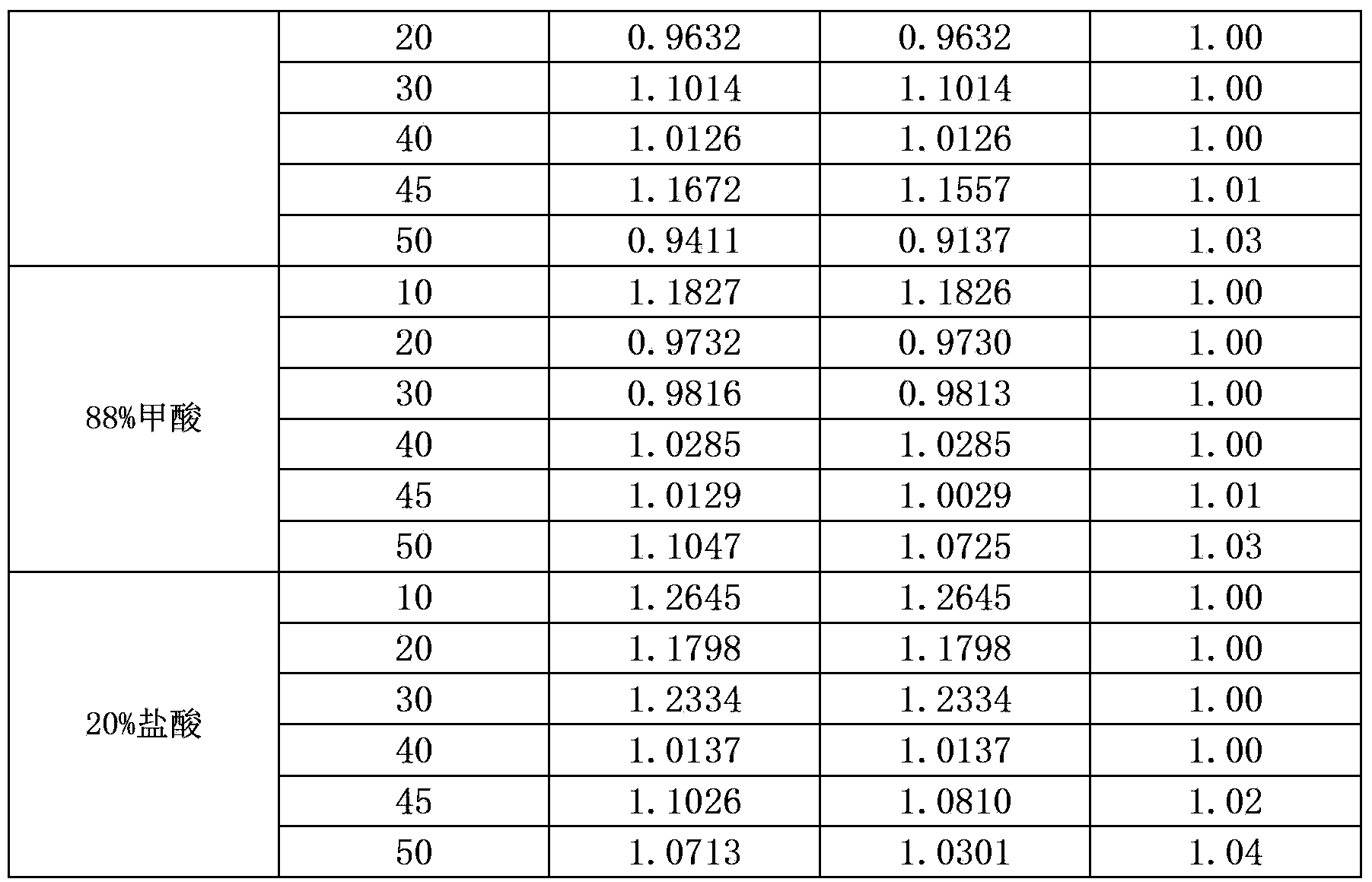Quantitative determination method for fiber content of viloft fiber and polyamide blended textiles
A quantitative detection method and fiber content technology, which is applied in the detection field of products containing viloft fiber and nylon blends, can solve the problems of low detection efficiency, affecting the accuracy of measurement results and the efficiency of measurement work, and achieve shortened detection time and high accuracy performance and improve detection efficiency
- Summary
- Abstract
- Description
- Claims
- Application Information
AI Technical Summary
Problems solved by technology
Method used
Image
Examples
Embodiment 1
[0023] Embodiment 1 viloft fiber correction coefficient experiment
[0024] Take a certain amount of viloft fiber and place it in a constant temperature oven at 105°C for 3 hours. After it is fully dried, take it out quickly and place it in a desiccator to cool to room temperature. Use a balance with an accuracy of 0.1 mg to weigh the amount of viloft fiber. The weight, denoted as a, according to the sample (g): reagent (mL) = 1:100 bath ratio, put the viloft fiber in formic acid with a mass concentration of 80% to 88% or hydrochloric acid with a mass concentration of 20%. After shaking continuously for 20 minutes at 10-50°C, wash the viloft fibers with water until neutral, dry them in a constant temperature oven at 105°C, then quickly take them out and place them in a desiccator to cool to room temperature, with an accuracy of 0.1mg The balance weighs the weight b. Comparing the size of a and b can get the mass loss of the viloft fiber after being treated with the reagent so...
Embodiment 2
[0029] Embodiment 2 viloft fiber dissolving performance test
[0030] In this test, 20% hydrochloric acid, 80% formic acid, 88% formic acid, and 75% sulfuric acid were selected as the dissolving reagents, and a certain mass of viloft fibers were put into the above reagents respectively. Dissolution at 30°C and 40°C, according to Table 2, it can be seen that viloft fiber is in 10-40°C, 80%-88% formic acid solution or in 10-30°C, 20% hydrochloric acid solution, viloft fiber None of them dissolved; while the viloft fiber only partially swelled in 40℃, 20% hydrochloric acid solution.
[0031] Table 2 Viloft fiber dissolving performance test
[0032]
Embodiment 3
[0033] Embodiment 3 80% formic acid dissolution test
[0034] Take 2 parts of viloft fiber and nylon blended products whose component content is unknown, and place them in a constant temperature oven at 105°C for 3 hours. Weigh the weight of the blended product with a balance with a density of 0.1 mg, and record it as m 0 According to the sample (g): reagent (mL) = 1:100 bath ratio, the blended product was placed in 80% formic acid, and after continuous shaking at 10°C for 20 minutes, the nylon was completely dissolved in the formic acid solution. The insoluble fiber, viloft fiber, is washed with water until neutral, dried in a constant temperature oven at 105°C, then quickly taken out and placed in a desiccator to cool to room temperature, and weighed with a balance with an accuracy of 0.1mg m 1 . Among them, the mass of viloft fiber in the blended product is m 1 , the mass of nylon is m 0 -m 1 .
[0035] After calculation and reasoning, the percentages of viloft fiber ...
PUM
 Login to View More
Login to View More Abstract
Description
Claims
Application Information
 Login to View More
Login to View More - R&D
- Intellectual Property
- Life Sciences
- Materials
- Tech Scout
- Unparalleled Data Quality
- Higher Quality Content
- 60% Fewer Hallucinations
Browse by: Latest US Patents, China's latest patents, Technical Efficacy Thesaurus, Application Domain, Technology Topic, Popular Technical Reports.
© 2025 PatSnap. All rights reserved.Legal|Privacy policy|Modern Slavery Act Transparency Statement|Sitemap|About US| Contact US: help@patsnap.com



